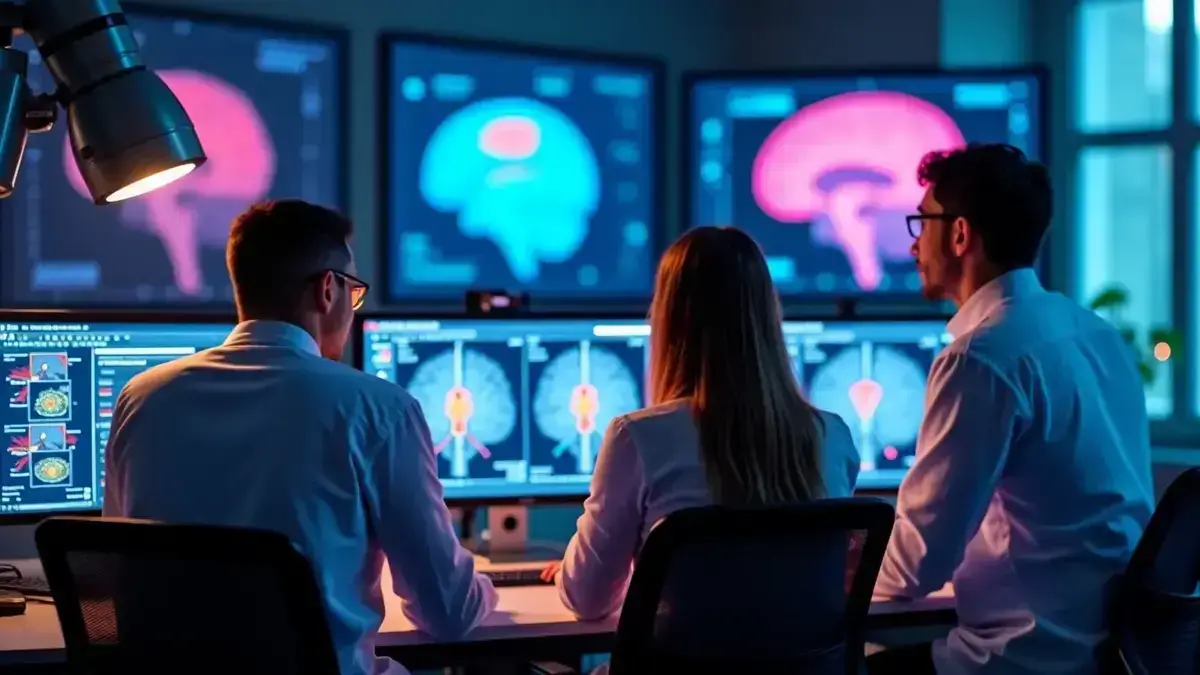A team of researchers from the Institute of Sciences and Technologies in Austria has identified a crucial mechanism for image stabilization in the brain. This process, located in the ventral lateral geniculate nucleus (vLGN) of the thalamus, allows our eyes to perceive sharp images even during rapid movements. Thanks to two-photon calcium imaging, the scientists were able to observe how this mechanism predicts the blurriness of images, highlighting the importance of stable visual perceptions.
The essence of the information
- Discovery of a mechanism for image stabilization in the brain.
- Research conducted at the Institute of Sciences and Technologies in Austria.
- The brain predicts and corrects visual distortions caused by movement.
- Mechanism identified in the ventral lateral geniculate nucleus of the thalamus.
Discovery of a mechanism for image stabilization in the brain
A research team at the Institute of Sciences and Technologies in Austria has recently made an important discovery about how our brains function in terms of visual perception. We all know that when we move quickly, the images captured by a camera often become blurry. However, this phenomenon does not occur with our eyes, which appear to maintain a constant clarity even during rapid movements.
A brain that predicts and corrects
This study reveals that our brains possess an advanced mechanism that enables them to predict and correct visual distortions caused by movement. In fact, the brain anticipates the blurriness of images based on motor instructions, allowing it to maintain a stable and continuous perception of the world around us, despite rapid changes in position or viewing angle.
Identification of the mechanism in the ventral lateral geniculate nucleus
The researchers have identified this mechanism in the ventral lateral geniculate nucleus (vLGN) of the thalamus, a key area of the brain involved in sensory processing. By using two-photon calcium imaging, they were able to observe neuronal activity in this area, shedding light on the internal workings of this visual stabilization system.
Combination of sensory and motor information
It is fascinating to note that the vLGN not only processes visual information. It also combines various sensory and motor information to enhance our perception of moving images. This integrated system allows the brain to anticipate the effects of movement on our perceptions, resulting in a smoother and more stable visual experience.
A mechanism common to all vertebrates
The results of this research suggest that this mechanism could be common to all vertebrates, raising exciting questions about their similarities to humans. The ability to maintain stable visual perceptions despite rapid movements may be a crucial evolutionary trait, facilitating navigation and interaction with our environment.
Importance of stable visual perceptions
This discovery highlights the importance of having stable visual perceptions, which are essential for many cognitive and behavioral functions. Effective processing of visual signals is crucial for understanding our environment and making safe decisions. The functioning of this image stabilization mechanism illustrates how our brains adapt and compensate to provide us with a consistent perceptual reality.

